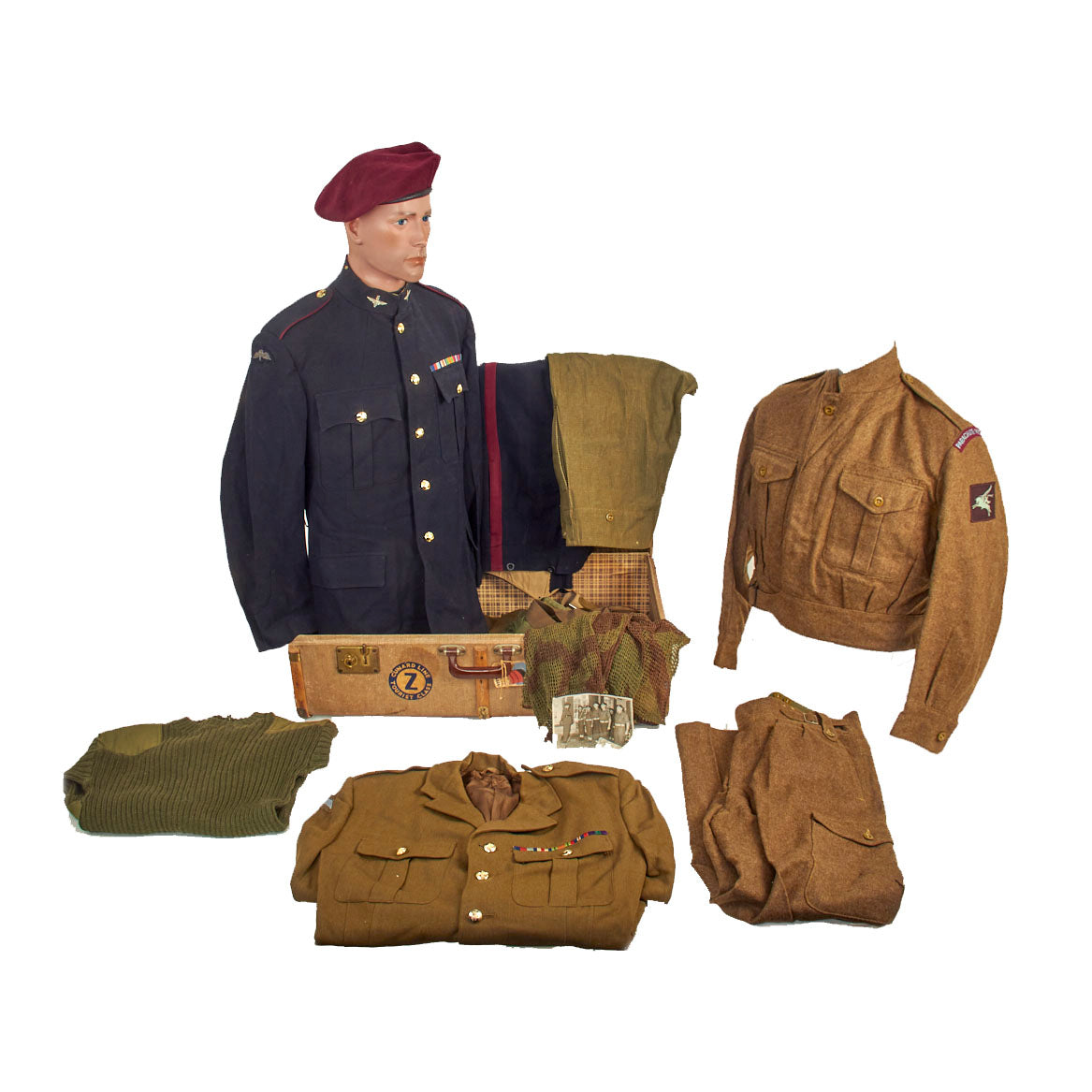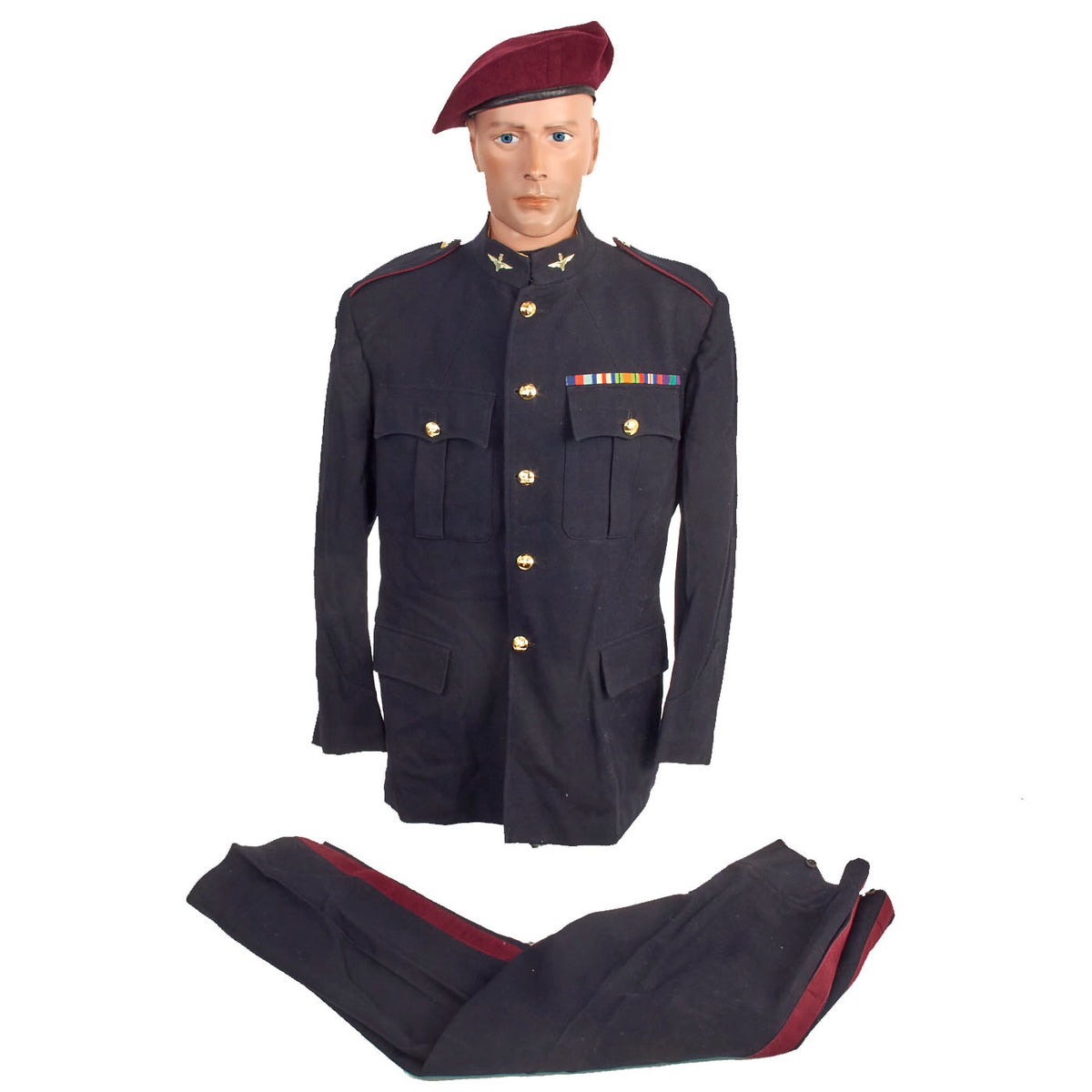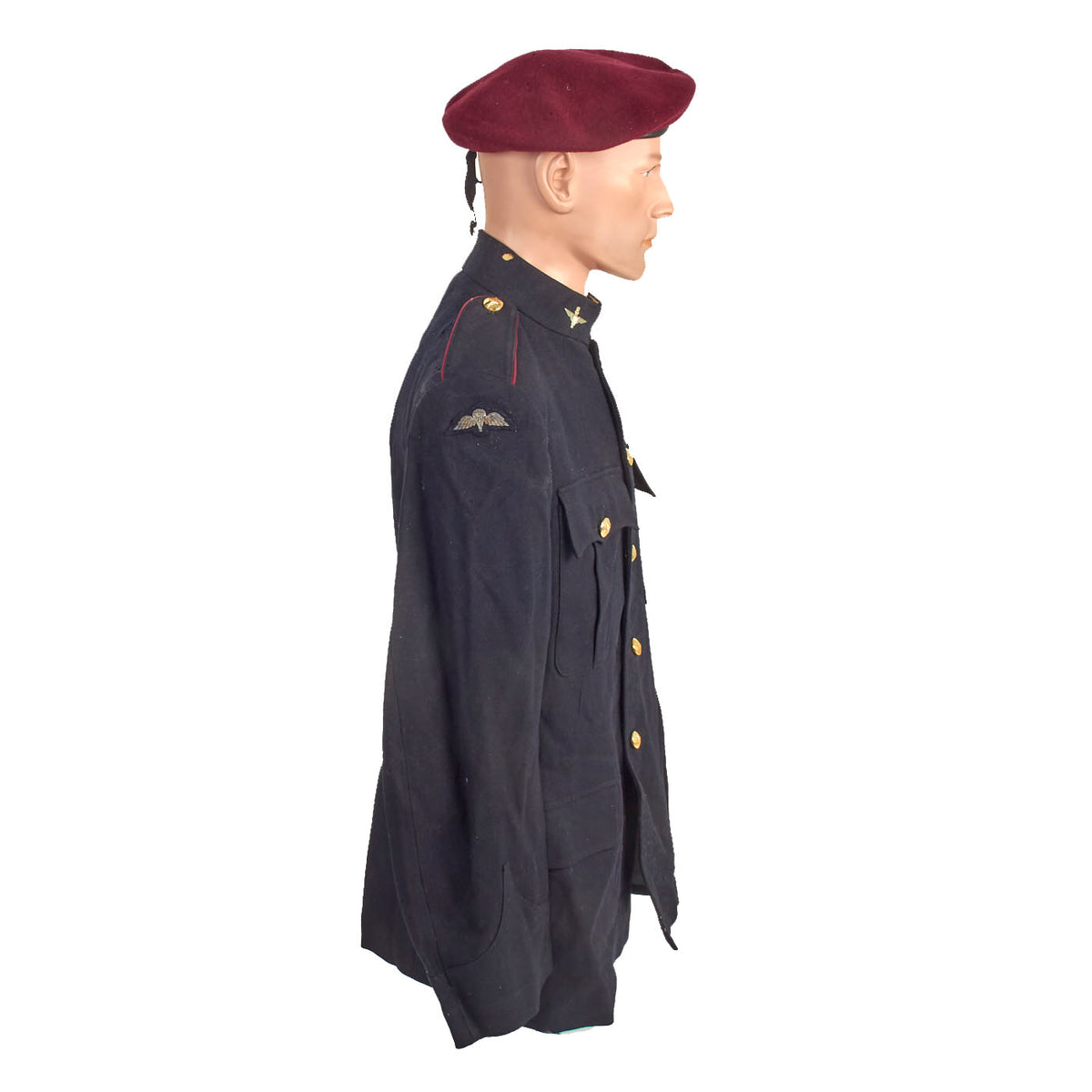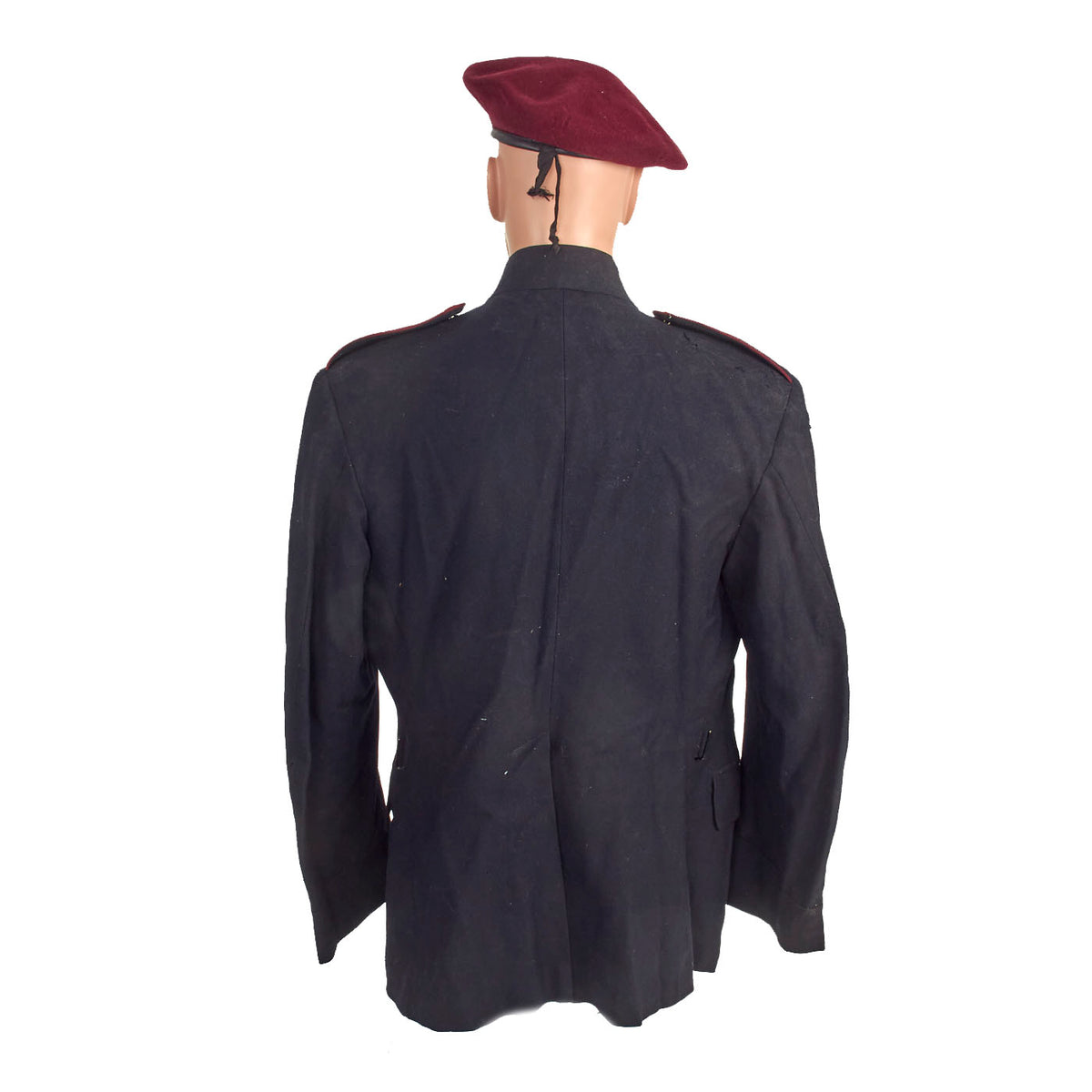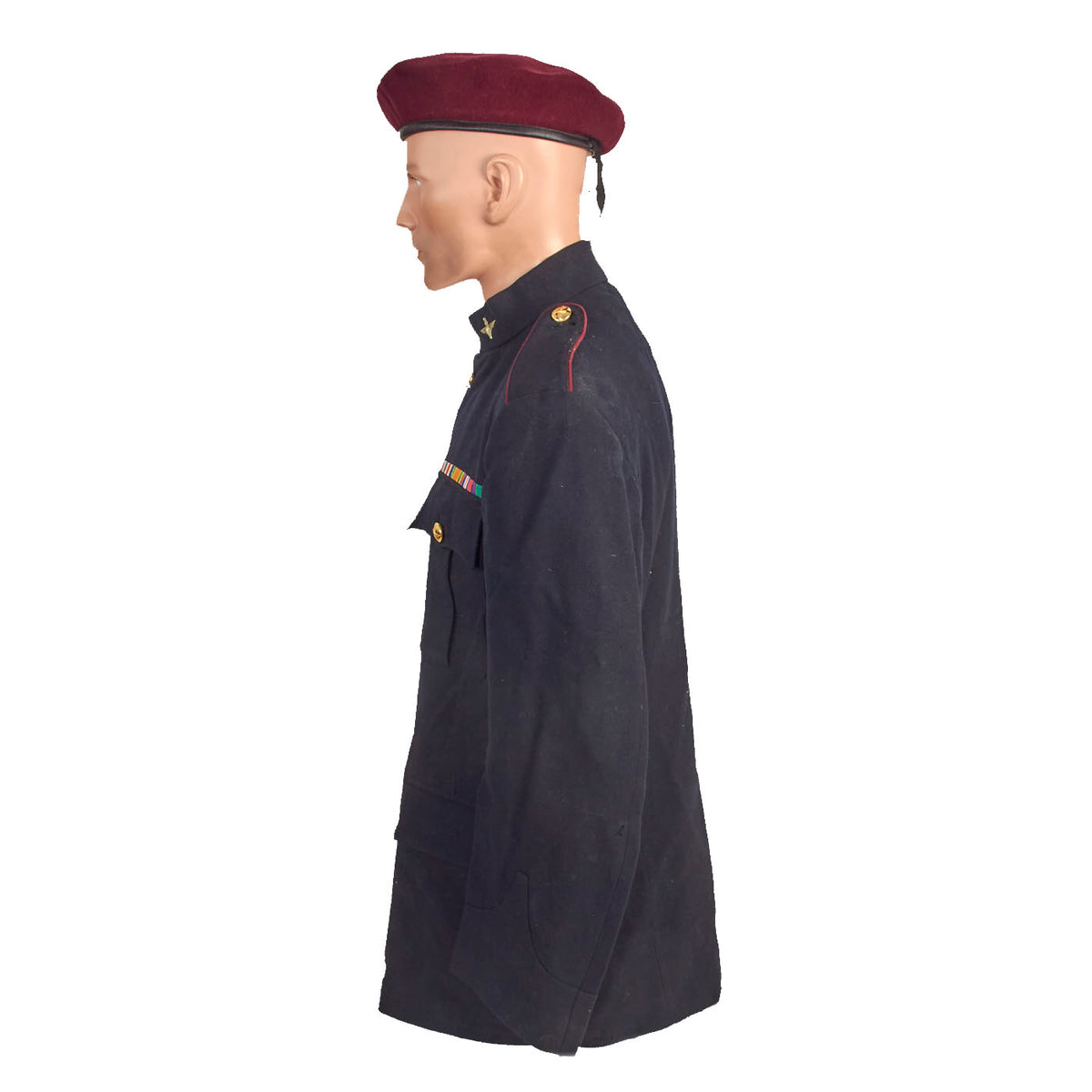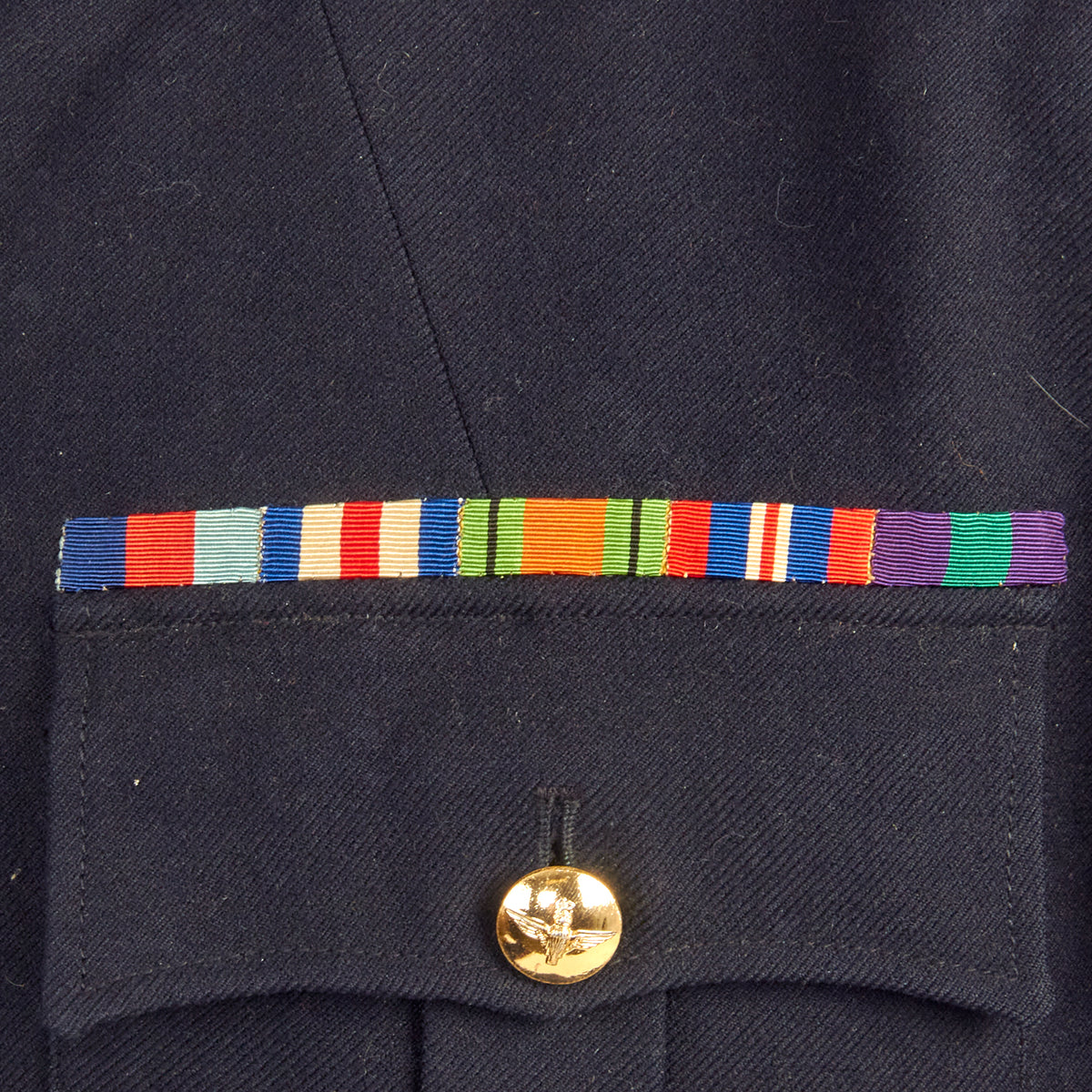Original British 1st Battalion Parachute Regiment Uniform Grouping For Private Robert Marken, WWII Veteran from Belfast, Ireland – Served 1940 to 1965 Original Items
$ 795,00 $ 238,50
Original Items: One of a Kind Grouping. This is a fantastic “trunk” grouping for WWII Veteran Robert Marken who enlisted out of Belfast, Ireland in 1940 and served up into the 1960s. The grouping comes with a binder full of copies of his military records, which can be confusing, so further research is a must! He enlisted on November 1, 1940 for 4 years which was then extended in 1944. He passed his glider test in 1943 and was granted his Parachute Badge in 1947. As you progress deeper into his records, his service history becomes confusing, as he was still receiving vaccinations for military service in 1966, but no records pertaining to his service during that time are present, making for a wonderful research opportunity.
The Following Items Are Featured In This Grouping:
– Pattern 1949 Battledress Uniform Jacket and Pants Dated 1960: This is a wonderful uniform set. The battledress blouse is nearly identical in appearance to the 1940 pattern, but is a Post-War version. The most unique aspect of this blouse is the fact that it features original WWII Parachute Regiment insignia. Seeing how their insignia did not change much and he served during WWII, he more than likely recycled his insignia from uniform to uniform. There appears to have been a cloth ribbon bar present on the left breast but it was unfortunately removed at one point.
– Number 2 Service Dress Jacket With Trousers Dated 1961: Both items are in wonderful condition. The jacket features all original Parachute Regiment buttons as well as the “wings” on the right shoulder. The cloth ribbon bar on the left side features ribbons for 1939-45 Star, France and Germany Star, Defence Medal, War Medal 1939-1945 and 1918 General Service Medal. The General Service Medal (1918) was awarded from 1918 to 1962.
– Number 1 Dress Blues Jacket With Trousers Dated 1961: Both items are in wonderful condition though the Blues jacket does have some minor tearing of the liner present. The jacket features all original Parachute Regiment buttons as well as a set of bullion “wings” on the right shoulder and both collar devices. The cloth ribbon bar on the left side features ribbons for 1939-45 Star, France and Germany Star, Defence Medal, War Medal 1939-1945 and 1918 General Service Medal.
– 6” x 4 ½” Photograph: The photo features an image of General Richard Gale talking to the Veterans of the Regiment still serving in the 1st Parachute Battalion. It is unclear when the photo was taken, but we believe it was just before his retirement in 1960.
Other items include a worn green wool “commando” sweater, camouflage net scarf, woven cloth tie and a pair of field service trousers. The maroon beret that is included with the grouping is in wonderful condition and is dated 1958. All items still retain their original tags as well as Marken’s named either stamped or written on the tags. All of these fit neatly into the suitcase / trunk, which measures about 30″ x 18″ x 10 1/2″.
A wonderful group of items that comes more than ready for further research and display.
Marked Measurements (on tags):
(Jacket 31 Dress Blue)
Height: 5’9
Breast: 44 ½”
Waist: 41 ½”
Half Back: 8 ½”
Sleeve Length: 32”
(#1 Dress Blue Trousers)
Height: 5’9
Waist: 40 ½”
Seat: 45”
Leg Length: 30”
(Battle Dress)
Height: 5’11 – 6ft
Breast: 42” – 43”
Waist: 37” – 38”
(Battle Dress Trousers)
Waist: 38” – 39”
Seat: 44” – 45″
Leg Seam: 34 ½”
(Jacket #2)
Height: 5’9
Breast: 44 ½”
Waist: 41”
Natural Waist: 17 ½”
Length: 29 ⅜”
Half Back: 8 ½”
Sleeve Length: 32”
(Trouser combat Sateen)
Waist: 37”
Seat: 44”
Inseam: 31 ½”
(Suit #2 Dress)
Height: 5’9
Waist: 40 ½”
Seat: 45”
Side Seam: 41 ½”
Leg Length: 29”
(Denim trousers)
Waist: 32” – 34”
Seat: 45”
Leg Seam: 33”
1st Battalion, Parachute Regiment
The 1st Battalion can trace its origins to 1940, when No. 2 Commando trained as parachutists. In 1941, the battalion, commanded by Lieutenant Colonel Ernest Down, was assigned to the 1st Parachute Brigade which also included the 2nd and 3rd Parachute Battalions. The 1st Parachute Brigade was part of the 1st Airborne Division and remained with it throughout the war.
The battalion took part in operations in Tunisia in late 1942 to May 1943, suffering heavy casualties. The battalion and the brigade took part in Operation Fustian, when the Allies invaded Sicily and, again, suffered heavy casualties and was withdrawn to England in late 1943 to train and prepare for the Allied invasion of France. The battalion wasn’t used in the initial invasion on 6 June 1944, D-Day, but was held back in the UK in reserve in case any of the five invasion beaches encountered serious difficulties and needed support. The plan turned out not to be required. During the fighting in Normandy numerous plans to drop the 1st Airborne were formed, none of which came to fruition. Finally, in September 1944, the battalion, commanded by Lieutenant Colonel David Dobie, dropped into Arnhem, the Netherlands with the rest of the 1st Airborne Division, as part of Operation Market Garden, where they suffered extremely heavy casualties and never saw combat again for the rest of the war.
After the war the battalion was reconstituted in 1946, and affiliated to the Brigade of Guards and served with the 6th Airborne Division in Palestine. It was disbanded in 1948, only to be reformed by the renumbering of the 4th/6th Battalion. The battalion was part of Operation Musketeer in 1956.
In the 1970s, the battalion first deployed to Northern Ireland in Operation Banner. The battalion was involved in the Ballymurphy Massacre in August 1971, when 11 Catholic civilians were shot dead and many wounded over a two-day period. In January 1972, both the press and some in the Army accused the battalion of brutality against protesters outside Magilligan internment camp. A week later, on 30 January 1972, the battalion carried out the Bloody Sunday killings, when they opened fire on unarmed protesters in Derry, leaving 14 Catholic civilians dead and 13 wounded; the greatest killing of British subjects by government forces in one incident since the Irish War of Independence. The second official inquiry of the killings found 1st Para’s actions “unjustified and unjustifiable”. To date, none of the members of 1 Para have been prosecuted. The battalion was involved in another controversial shooting incident on 7 September 1972, when soldiers shot dead two Protestant civilians and wounded others in the Shankill area of Belfast. A unit of the Army’s Ulster Defence Regiment (UDR) refused to carry out duties until the battalion was withdrawn from the Shankill.
The battalion was involved in the NATO operation in Kosovo in 1999, Operation Agricola. In 2003, they were deployed to the Persian Gulf for Operation Telic in Iraq where two multiples of No. 8 platoon fought their way out of the town of Majar al-Kabir. The battle occurred in June 2003, following the invasion of Iraq. During the battle, six Royal Military Policemen of 156 Provost Company were killed by a mob.
Fast Shipping with Professional Packaging
Thanks to our longstanding association with UPS FedEx DHL, and other major international carriers, we are able to provide a range of shipping options. Our warehouse staff is expertly trained and will wrap your products according to our exact and precise specifications. Prior to shipping, your goods will be thoroughly examined and securely secured. We ship to thousands clients each day across multiple countries. This shows how we're dedicated to be the largest retailer on the internet. Warehouses and distribution centres can be located throughout Europe as well as the USA.
Note: Orders with more than one item will be assigned a processing date depending on the item.
Before shipping before shipping, we'll conduct a thorough inspection of the items you have ordered. Today, the majority of orders will be delivered within 48 hours. The delivery time will be between 3-7 days.
Returns
The stock is dynamic and we cannot completely manage it because multiple stakeholders are involved, including our factory and warehouse. So the actual stock may alter at any time. It's possible that you may not receive your order once the order has been made.
Our policy is valid for a period of 30 days. If you don't receive the product within 30 days, we are not able to issue a refund or an exchange.
You can only return an item if it is unused and in the same state as the day you received it. You must have the item in its original packaging.
Related products
Uncategorized
Uncategorized
Uncategorized
Uncategorized
Uncategorized
Uncategorized
Uncategorized
Uncategorized
Band of Brothers ORIGINAL GERMAN WWII Le. F.H. 18 10.5cm ARTILLERY PIECE Original Items
Uncategorized
Uncategorized
Uncategorized
Uncategorized
Uncategorized
Uncategorized
Uncategorized
Angolan Rebel 1970s era 60mm Inert Display Mortar from Angolan Civil War Original Items
Uncategorized
Uncategorized
